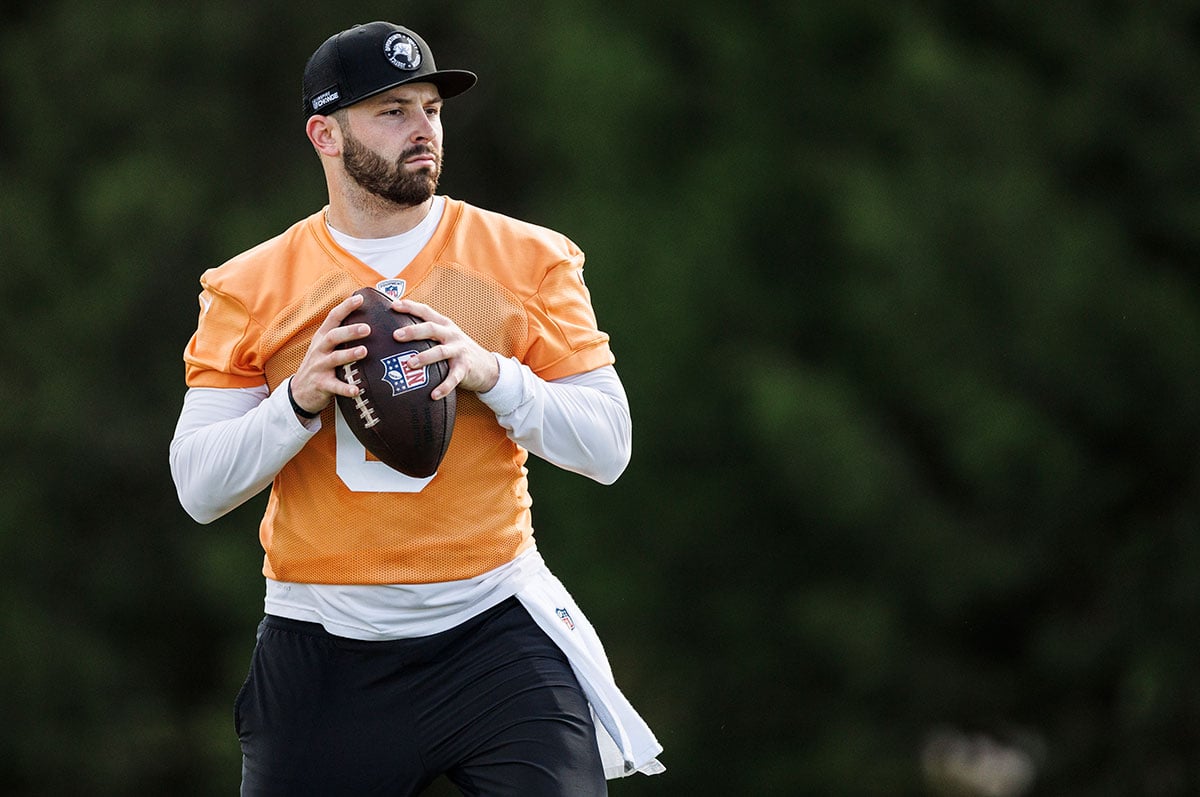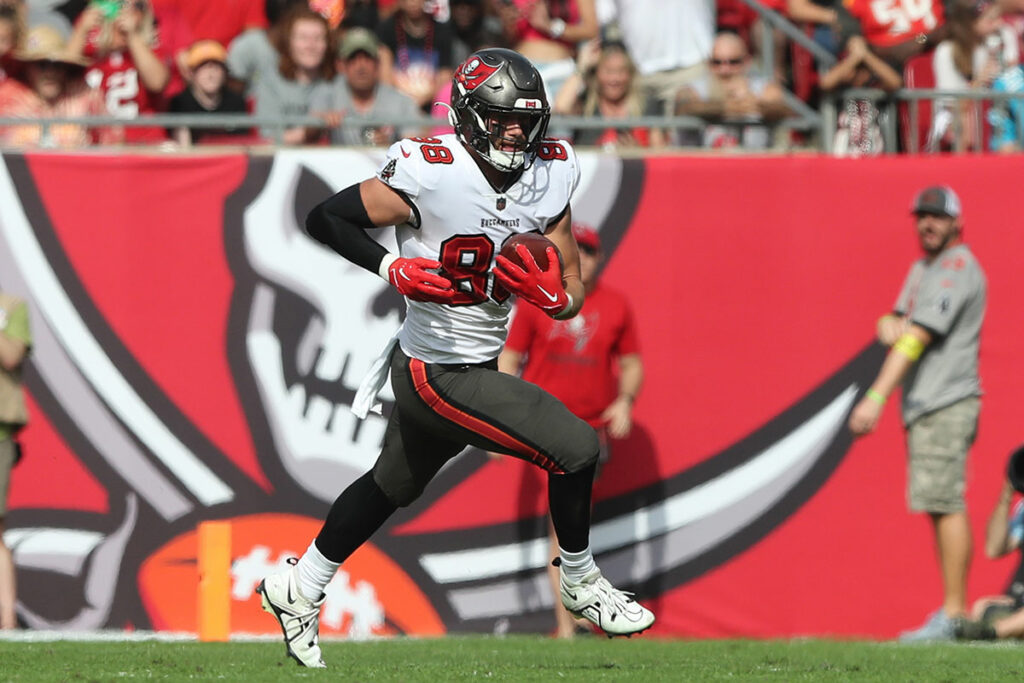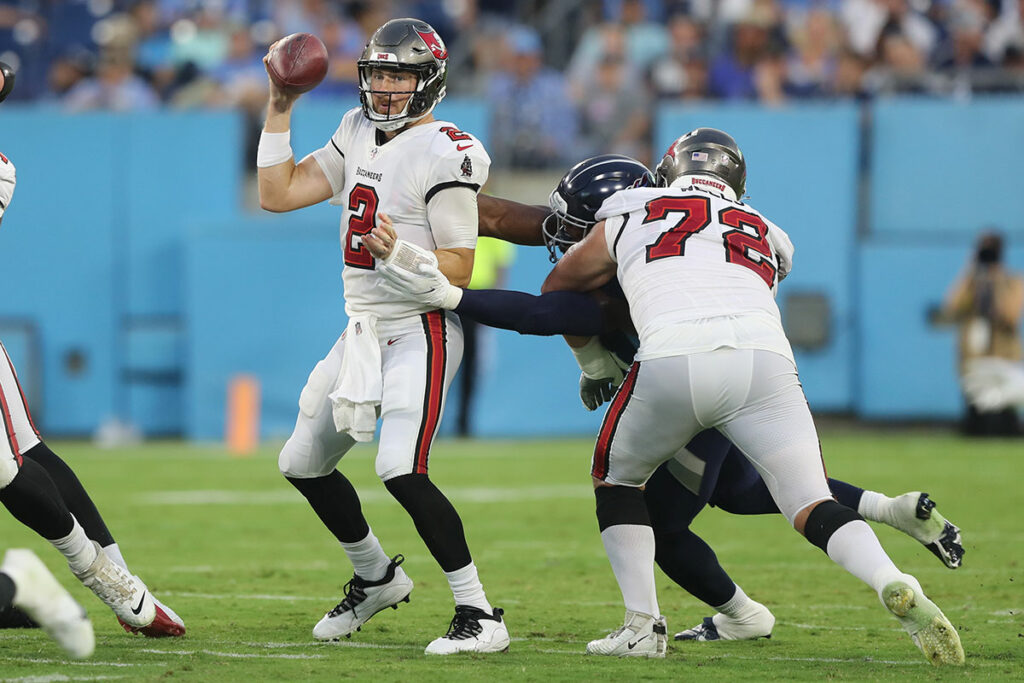The offseason is in full force. OTAs have begun. Roster building for most of the league is largely set (outside of the recent release of a certain high profile wide receiver). Seems like as good a time as any to start looking at how the Bucs stack up with their NFC South opponents by position groups.
And the position group leading off the series is the most important one on the field: quarterback.
Before we get to the ranking each team in the NFC South let’s look at what each team has at the signal-caller position. The division is lacking in experienced star power. And that is a theme in the NFC as a conference overall. The Saints have a legitimate claim to a Top 5 quarterback in the conference. And their starter was benched and released in the last six months.
For this exercise, I wanted to use some sort of verifiable, data-based way to rank each quarterback, so I have chosen to employ a simple 5-4-3 weighting system to each quarterback’s past three seasons Pro Football Focus grades.
New Orleans Saints
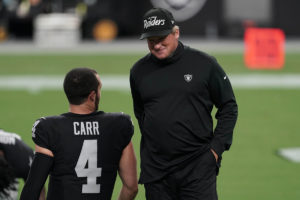
Former Raiders HC Jon Gruden and QB Derek Carr – Photo by: USA Today
The Saints decided to move on from a surprisingly strong season from Andy Dalton and gave a sizeable contract to former Raider Derek Carr. Carr is coming off of his worst season since his rookie campaign. He was benched and ultimately left the team with two games left in the season.
The marriage of Carr with new head coach Josh McDaniels was not a successful one. However, in the three years before that Carr posted some of the best play of his career under former head coach Jon Gruden.
Carr hasn’t fallen off physically from his 2019-2021 form. With offensive coordinator Pete Carmichael showing he can get the most out of a past-his-prime Dalton I have faith Carr is primed for a bounce back season.
Using the weighted averaging formula, I described at the top I project Carr for a 74.4 PFF grade. This ranks him first in my NFC South rankings.
Carolina Panthers
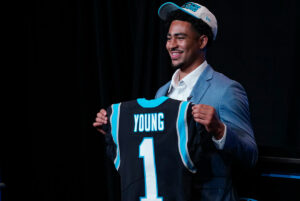
Panthers QB Bryce Young – Photo by: USA Today
Carolina bet big on the 2023 NFL Draft quarterback lottery. They paid a huge premium for the opportunity, giving up the ninth overall pick, the 61st overall pick, a first-round pick in the 2024 draft, a second-round pick in 2025 as well as wide receiver D.J. Moore. In return the team has placed the future of the franchise in number one overall pick Bryce Young.
Young had two amazing seasons at Alabama, throwing for 67 touchdowns to only nine interceptions and posting PFF grades of 92.3 and 91.0 respectively. Looking at the aforementioned rookie quarterbacks (plus Kenny Pickett in 2022) and there is a large range of potential outcomes ranging from Mayfield’s 2018 rookie season (83.2 PFF grade) on the high side to Josh Rosen’s rookie year of 2018 (49.1 PFF grade) on the low end.
The average PFF grade for that population is 65.8 (median 64.7). If we reduce that population to just first round draft picks the 17 players that remained had an average PFF grade in their rookie seasons of 67.3 (median 65.4). Based on these indicators I am projecting Young for a PFF grade of 66.0. This places him second in my NFC South rankings.
Tampa Bay Bucs
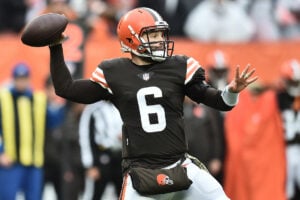
Bucs QB Baker Mayfield – Photo by: USA Today
The Bucs don’t have a named starter at this point. Kyle Trask and Baker Mayfield will enter training camp in August in a position battle. Mayfield has previously played at a high level in the NFL, but it has been some time since those days. Meanwhile, Trask did not play well in his very limited action in Week 18 of last year.
In order to rank the Bucs, we must make an educated guess on how that quarterback battle will wind up. I apologize to all of the Kyle Trask believers out there but in my eyes, this is Baker Mayfield’s job. And I’m not alone.
Assuming Mayfield is the starter it can be a challenge to pinpoint what kind of performance to expect from him. Looking at his yearly Pro Football Focus grades and they are all over the map. In five seasons Baker has had two good seasons, two poor seasons and one right in the middle. His Pro Football Focus grades ranged from the low 80s (83.2 in 2018 and 81.6 in 2020) to very poor (50.6 last year and 63.6 in 2021) with one solid, but unspectacular season for good measure (74.8 grade in 2019).
With all that variance it is near impossible to project what kind of performance Mayfield will provide in 2023. The two poor seasons have reasonable explanations attached to them. Mayfield’s 2021 was doomed due to a torn labrum in his non-throwing shoulder that affected his throwing motion. He stubbornly tried to play through the injury, and it wrecked his performance as well as the Browns’ chances of making the playoffs for the second consecutive year.
And last year Mayfield arrived very late to Carolina after a protracted standoff between the Browns and the league on a trade of Mayfield. Once he landed with the Panthers, Baker had to navigate a quarterback battle in training camp before emerging victorious only to be benched and eventually released later in the year.
Following that release he was claimed by the Rams, who had lost starter Matt Stafford for the season. Mayfield put together a heroic performance on two days of preparation against the Raiders on Thursday Night Football. He closed the season with three poor games and one decent one.
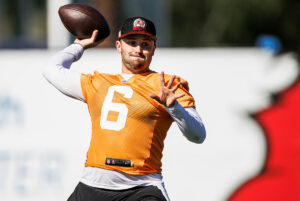
Bucs QB Baker Mayfield – Photo courtesy of the Buccaneers
Baker still has the physical tools that once made him the No. 1 overall pick in 2018. He is back in a system that he once thrived in and by all accounts is healthy with a full offseason to prepare. The conditions are perfect for him to regain his once promising form.
But we have to acknowledge the red flags that are present. He is two years removed from consistent quality play, had very few suitors in the offseason and was able to be signed by a team with a very limited salary cap position. The NFL as a whole has serious questions about Baker’s viability and you should to. Not that he can’t overcome those, but to assume he is going to be good-to-great is a fool’s errand.
Using the weighted average method Baker’s expected PFF grade for 2023 is 62.7. This places him third in my NFC South projections, but with some of the highest potential variance.
Atlanta Falcons
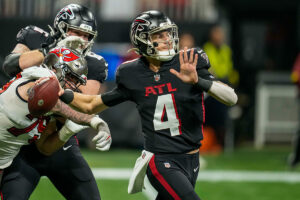
Falcons QB Desmond Ridder – Photo by: USA Today
The Falcons are rolling with 2022 third-round pick Desmond Ridder in 2023. Ridder got an extended look late last season. With his plus athleticism Ridder has a skillset that could play very well in head coach Arthur Blank’s offense behind a solid offensive line and a litany of playmakers in a run-heavy offense.
Even so, he struggled mightily in his debut season. Despite being named the starting quarterback in week 15, Ridder failed to record a touchdown pass until Week 18. He ended the season with a PFF grade of just 55.9.
Over the past six years 21 quarterbacks matched Ridder’s 136 drop backs in their rookie season and had at least the same number in their 2nd year. The average improvement in PFF score among that group in year two was 5.3 (the median was 5.4). We can reasonably expect that Ridder’s performance could elevate to 61.3, which would rank him last in my NFC South projections.
Synopsis
The reality is that the NFC South sports one of the weakest and highest variance groups in the league. Carr’s experience and track record should make him the safest bet to be the best in 2023, as any explanation one might do to create a positive narrative for Mayfield should surely be applied to Carr as well. He has had the higher highs as well as the higher lows of the two, after all.

Raiders QB Derek Carr – Photo by: USA Today
The questions surrounding Young as a draft prospect had very little to do with his ability and on-field play. They had more to do with his availability and whether he could be reasonably expected to hold up physically against NFL defenses given his small stature. But assuming his health and looking at the recent history of rookie quarterback performances one can assume he will have a solid, if unspectacular rookie year complete with requisite ups and downs.
It would not surprise me one bit to see a healthy Mayfield in a system that accentuates his strengths, and a very good bevy of weapons turn out to be the best quarterback in the division by a country mile. However, while we can rationalize his most recent poor performance, we can’t entirely ignore it. Hence his third-place ranking.
Ridder was a mid-round draft pick who did little to disprove his draft status in limited action late last year. The best thing he has going for him is a head coach who is legitimately one of the better offensive minds in the league. Arthur Smith should be trusted to get the most out of Ridder by leveraging his strengths and minimizing his weaknesses. Ridder in a run and play-action heavy system could very well deliver league average production. But unlike the other three quarterbacks in the division the question has to remain, can he deliver anything more?
Josh Queipo joined the Pewter Report team in 2022, specializing in salary cap analysis and film study. In addition to his official role with the website and podcast, he has an unofficial role as the Pewter Report team’s beaming light of positivity and jokes. A staunch proponent of the forward pass, he is a father to two amazing children and loves sushi, brisket, steak and bacon, though the order changes depending on the day. He graduated from the University of South Florida in 2008 with a degree in finance.

